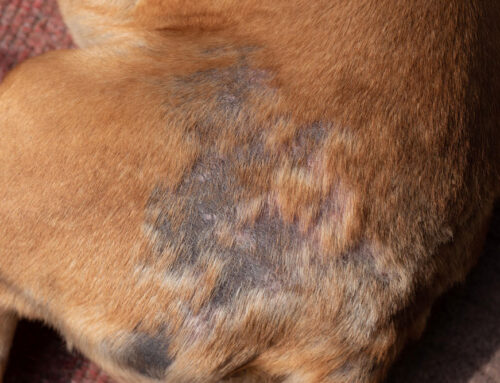World Rabies Day: Awareness is the best defense against rabies
On September 28th rabies experts, health practitioners and activists are once again joining together on World Rabies Day to raise awareness about rabies prevention. Rabies is the oldest and one of the deadliest disease known to mankind, but it is 100% preventable. This year, the Public Health Committee of the Alabama VMA is helping to highlight the plight of the 55,000 people still dying needlessly from the disease each year. Nearly half of them are in African countries, and are likely to be children under the age of 15.
“Rabies is primarily a disease of children, who are particularly at risk because they come into close contact with dogs, the major global source,” said Dr. Deborah Briggs, Executive Director of the Alliance for Rabies Control. “Children are often unaware that dogs can transmit rabies, and may not tell their parents when they are bitten, licked or scratched by an infected animal.”
General rabies information
• Rabies is caused by a virus that animals and people can get through certain exposures to the saliva or nervous tissue from a rabid animal and is nearly always fatal without proper postexposure prophylaxis [treatment] (PEP).
• Rabies is zoonotic, which means it can spread from animals to people.
• Rabies is 100% preventable. In most cases, preventing rabies is as simple as ensuring adequate animal vaccination and control, avoiding contact with wild animals, and educating those at risk.
Rabies Statistics
• On average there are over 7,000 cases of animal rabies reported in the U.S each year. These animals, mostly wildlife, can expose humans or pets to rabies.
• In the U.S., typically 1-3 cases of human rabies are reported per year. CDC confirmed 2 cases in 2013 and 1 case in 2012.
• In the U.S., raccoons are the most common animals found to be rabid, followed by skunks and bats. However, the type of terrestrial mammals that carry rabies varies across geographic areas of the U.S.:http://www.cdc.gov/ncidod/dvrd/rabies/Epidemiology/Epidemiology.htm#Wild%20Animals.
• In Alabama 39 animals tested positive for rabies in 2013, 55 were positive in 2012 and 82 were positive for the disease in 2011. Raccoons and bats are most frequently positive for rabies in Alabama.
Rabies prevention starts with the animal owner
• All dogs, cats and ferrets should be vaccinated against rabies. Consider vaccinating valuable livestock and horses. Animals that have frequent contact with humans should be vaccinated.
• Pet owners can reduce the possibility of pets being exposed to rabies by not letting them roam free.
• Spaying or neutering your pet may reduce any tendency they might have to roam or fight and thus reduce the chance that they will be exposed to rabies.
Reduce the risk of exposure to rabies from wildlife
• Don’t feed or water your pets outside. Even empty bowls will attract wild and stray animals.
• Keep your garbage securely covered. Open garbage will attract wild or stray animals.
• Wild animals should not be kept as pets.
• Enjoy all wild animals from a distance and teach children never to handle unfamiliar animals – even if they appear friendly.
• If you see a wild animal acting strangely, report it to city or county animal control officials.
• Bat-proof your home in the fall and winter.
What to do when your pet bites someone
• Contact your local health department or local animal control.
• A dog, cat or ferret that bites a human needs to be examined by a licensed veterinarian immediately.
• The local public health official may require monitoring the pet at home or at a veterinary clinic for 10 days.
• Report any illness or unusual behavior by your pet to the local health department and to your veterinarian immediately.
What to do when your pet gets bitten by another animal
• Consult your veterinarian immediately and have your veterinarian examine your pet and assess your pet’s vaccination needs.
• Contact local animal control if the bite was from a stray or wild animal.
• Monitor your pet at home or in a veterinary clinic for a specified time period by state law or local ordinance (usually at least 45 days) if an unvaccinated or wild animal bit your pet.
What to do if you are bitten by an animal
• Wash the wound thoroughly with soap and water for at least 5 minutes.
• Contact your physician immediately.
• Report the bite to the local health department. If necessary, you will be assessed for rabies post exposure prophylaxis.
• Prompt and appropriate treatment after being bitten and before the disease develops can stop rabies infection and prevent the disease.
Bats and Rabies
• Bats have small teeth which may leave marks that are not easily seen.
• Although many people know if they have been bitten by a bat, there are certain circumstances when a person might not be aware or unable to tell you that they have been bitten. These circumstances include:
• If a sleeping person awakes to find a bat in the room
• If you find a bat in a room with an unattended child
• If you see a bat near a person with disabilities
• If you see a bat near a person who is intoxicated
• In these circumstances, safely capture the bat for rabies testing. If the bat tests positive for rabies, or is unavailable for testing, the person should seek medical advice regarding the need for post exposure prophylaxis.
• Contact your local or state health department for assistance with animal testing and medical advice.
Post exposure prophylaxis (treatment):
• Post exposure prophylaxis (PEP) is indicated for persons possibly exposed to a rabid animal (or human).
• Possible exposures include animal bites or mucous membrane contamination with infectious tissue or fluids such as saliva. Blood, feces and urine do not carry the virus and are not infectious. {For more information on types of exposures, see Human Rabies Prevention – United States, 1999 Recommendations of the Immunization Practices Advisory Committee (ACIP).}
• PEP should begin as soon as possible after an exposure. Administration of rabies PEP is a medical urgency, not a medical emergency. There have been no vaccine failures in the United States (i.e., someone developed rabies) when PEP was given promptly and appropriately after an exposure.
• Physicians should evaluate each possible exposure to rabies and as necessary consult with local or state public health officials regarding the need for rabies PEP.
Post exposure prophylaxis (treatment) regimen:
• In the United States, post exposure prophylaxis for non-immunocompromised previously unvaccinated persons consists of rabies immune globulin and four doses of rabies vaccine over a 14- day period (http://www.cdc.gov/rabies/resources/acip_recommendations.html).
• The immune globulin and the first dose of vaccine should be given as soon as possible after exposure.
• Additional doses of rabies vaccine should be given on days 3, 7, and 14 after the first vaccination.
• Persons who are immunocompromised require rabies immune globulin and vaccine as soon as possible plus four additional doses administered on days 3, 7, 14 and 28 (visit the following link for Rabies Medical Care informationhttp://www.cdc.gov/rabies/medical_care/index.html).
Pre exposure vaccination series:
• Pre exposure vaccination should be offered to persons in high-risk groups, such as veterinarians and animal handlers that work in rabies endemic areas, and certain laboratory workers.
• Pre exposure vaccination also should be considered for other persons whose activities bring them into frequent contact with rabies virus or potentially rabid bats, raccoons, skunks, cats, dogs, or other species at risk for having rabies.
• The pre exposure series consists of three doses of rabies vaccine administered on days 0, 7 and 21 or 28.
Incidence of patient recovery from clinical rabies:
In October 2004, a previously healthy female aged 15 years in Fond du Lac County, Wisconsin, received a diagnosis of rabies after being bitten by a bat approximately 1 month prior to illness. The patient recovered from clinical rabies possibly through a modified, novel approach to supportive care. This is the first documented recovery from clinical rabies by a patient who had not received either pre- or post exposure prophylaxis for rabieshttp://www.cdc.gov/mmwr/preview/mmwrhtml/mm5350a1.htm.
Useful Websites:
World Rabies Day graphics for download click here
CDC Rabies Website: www.cdc.gov/rabies
WHO Rabies Website: http://www.who.int/rabies/en/
NASPHV Rabies Compendium: http://www.nasphv.org/documentsCompendia.html
World Rabies Day Website: http://rabiesalliance.org/world-rabies-day/
Alabama Department of Public Health: http://www.adph.org (rabies in the A-Z index).








Leave A Comment